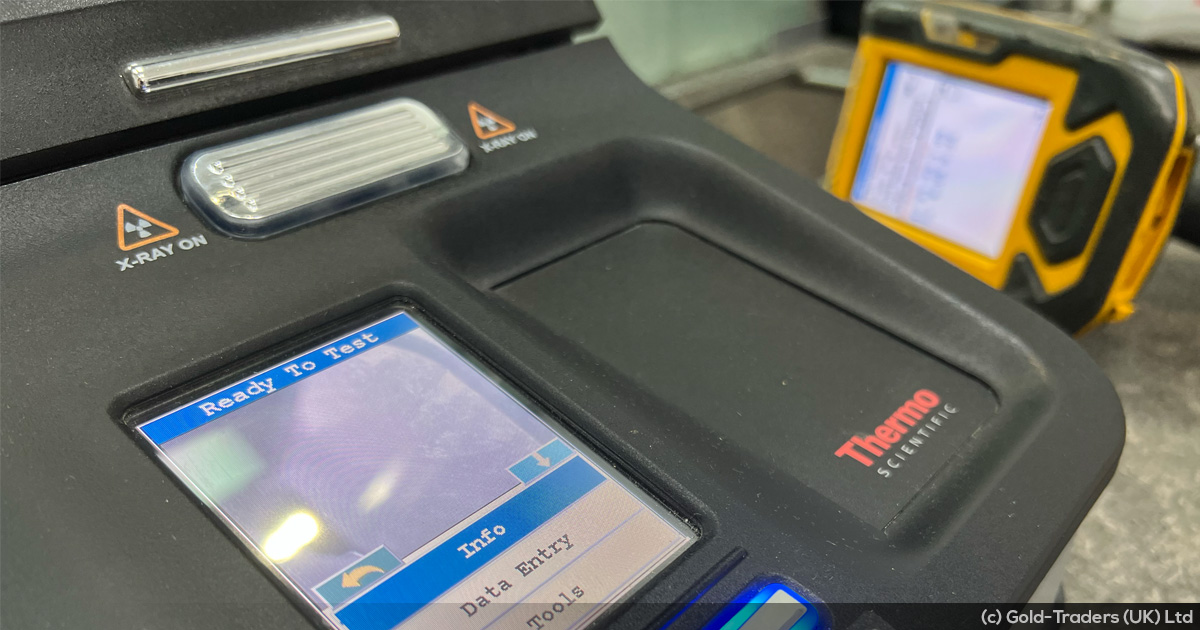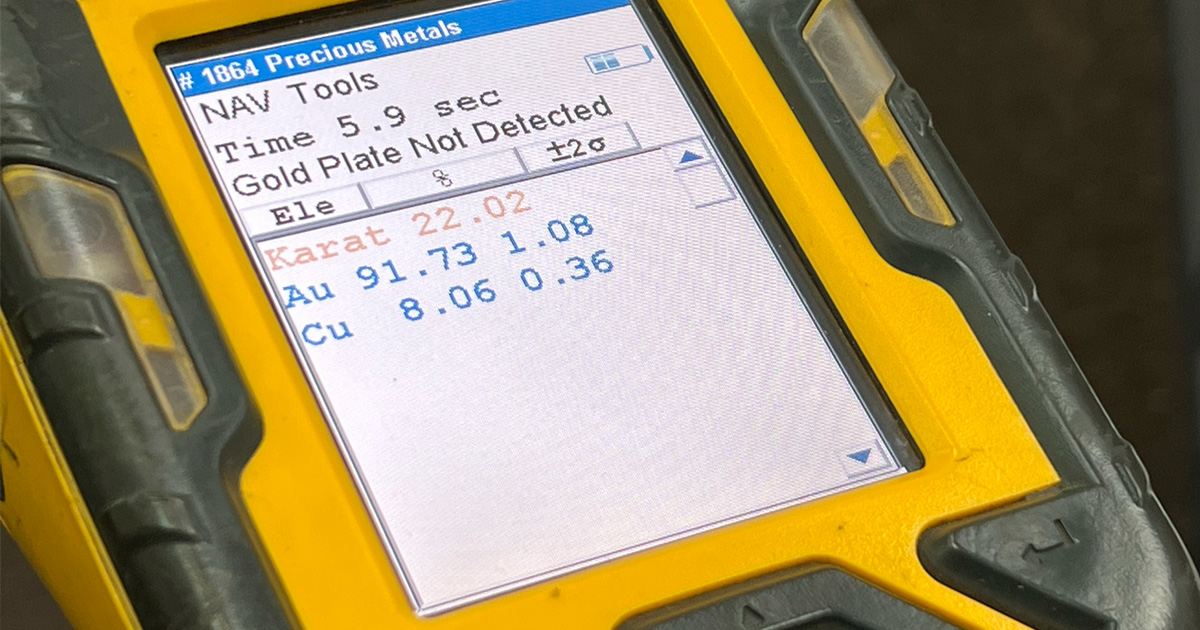
We use XRF machines to confirm the exact composition of the metal you send us. This technology helps us get you the best price but what is an XRF machine? And how does it affect the valuations we’re able to give?
Why Do You Use XRF Analysis?
We process a large amount of precious metal items every day in the Gold Traders office. Our expert team have been handling this sort of material for decades, so we can often tell by eye or by weight in the hand if we’re dealing with real gold, silver or platinum.
We back this up by examining tiny hallmarks with magnifying glasses though these can’t always be relied upon (especially with foreign material). Additionally, lots of jewellery and most coinage doesn’t display any indication of its purity.
We price your precious metals based on its purity. That’s why its vitally important that we can identify the exact chemical make up of any item accurately. To do this we use what’s called an XRF Machine.
We use our tabletop XRF machine for most items received by post at our Wiltshire processing centre.
What Does XRF Measure?
XRF machines work on the science of X-ray fluorescence.

XRF machines produce a targeted radiation beam which, when aimed at samples, measures the amounts of each element present. The machine presents this by producing a percentage breakdown.
These machines produce lab-quality results in seconds that give us a highly accurate idea of the composition of a given item. This allows us to authenticate and process your precious metals fast, getting you the next day payment that we’re renown for.
How Does XRF Analysis Work?
We’re not scientists, just gold experts, but we researched the XRF process before installing our machine to ensure we understood the process.
All elements have a certain number of electrons in the atomic orbitals around their nuclei. Atoms become unstable when X-ray photons strike the object, expelling electrons from the atom’s inner orbital shells. As the atom regains stability, electrons from the higher energy outer shell moves to fill the vacancy in the inner orbitals. The transition emits photon energy known as X-ray fluorescence which the machine detects.
You can break the process down into four key steps:
- The X-ray tube in the XRF machine emits rays when deployed to test a sample
- When the X-rays encounter the sample it fluoresces and sends back an X-ray to the machine
- The machine measures the energy spectrum to determine which elements are present in the sample and the portion of each element the sample contains
- The machine displays its results from us to analyse
This sort of tech has been used for a long time, in fact X-rays were used for chemical analysis for the first time in 1913! Commercial XRF machines are more recent with advances in X-ray tube technology improving accuracy, safety and analysis times.
Is XRF Destructive?
XRF testing is a type of nondestructive analysis. However, it’s important to bear in mind we sometimes have to file an item to go past any potential plating the item might have.
Without this kit we would have to rely on the old fashioned ‘acid test’ method. Although still used today by many gold buyers, it’s far less accurate, which means gold buyers who rely on acid results will always pay a lower rate, just to be safe. Acid testing relies on an experienced individual making a small scratch on the surface of the metal and placing a tiny drop of highly concentrated acid on the item. The chemical reaction is observed, which determines whether the item is indeed gold and if so, whether it’s high, medium or low carat. Acid testing is unable to determine whether, for example, an item is 21 carat or 22 carat, hence a buyer using this method will always be conservative with a valuation.
However, we sometimes disassemble items for an XRF test. Watches are a good example. This is because we can get a better read if the object is broken down into difference components which may have very different compositions. In the case of a watch the case may be made of different materials to the face.
Don’t worry though: we carefully identify items that may have value beyond scrap before breaking any item down. That is, we’re not pulling Rolexes to pieces just so they fit in our XRF machine!
Is XRF Dangerous?
The amount of radiation emitted by desktop and handheld XRF machines is similar to the exposure you get from a dental X-ray. Used correctly, it is perfectly safe and does not render any object ‘radioactive’ or dangerous!
Of course, our team use our XRF machines all day every day. To protect ourselves, we follow the ALARA principle, ensuring we are subject to a dose that is ‘As Low As Reasonably Achievable’. We don’t hold items during analysis and we aim our portable device away from our bodies among other practices mandated by our risk assessments and our health and safety policy.
Further reading
Leave a Reply

